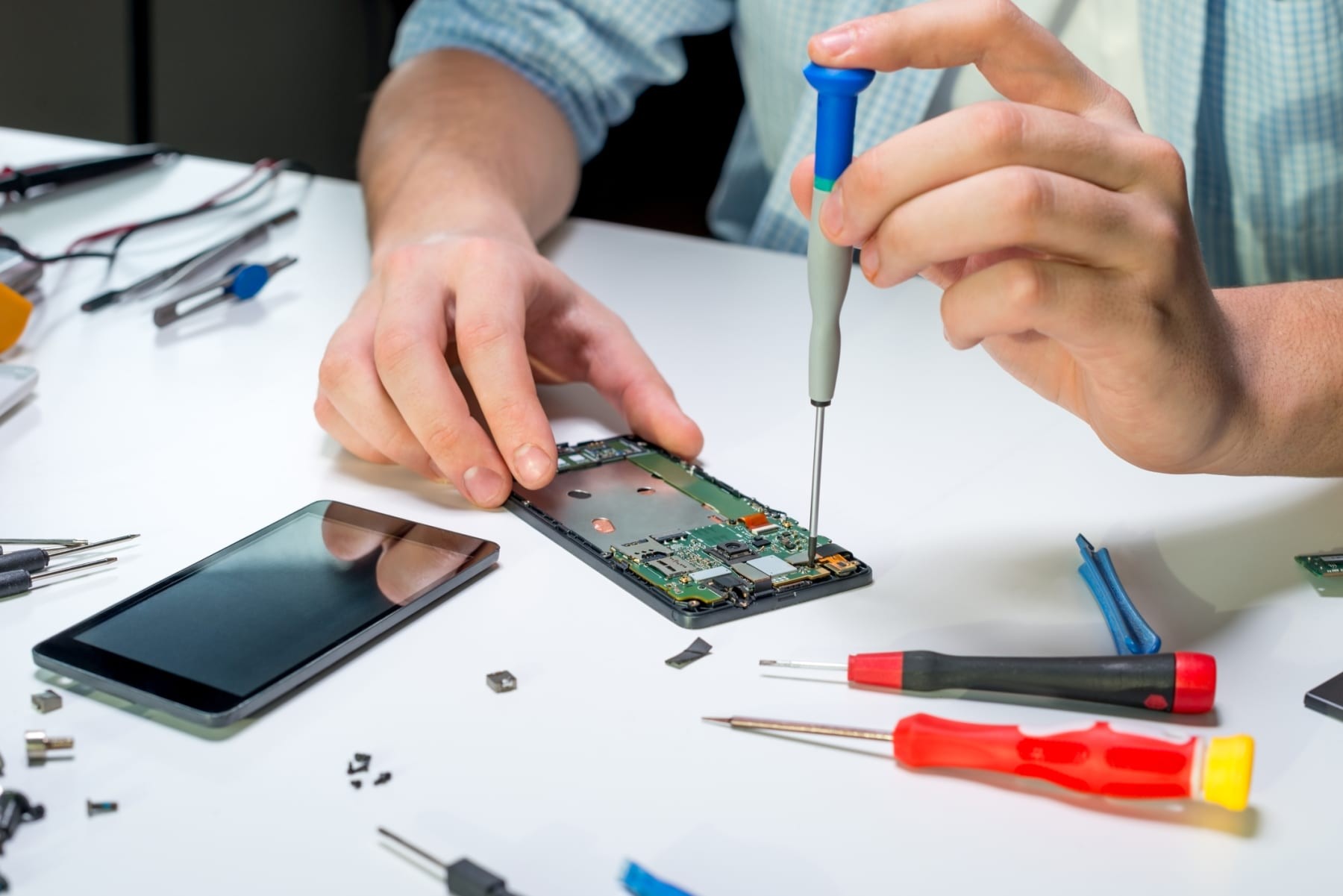It’s tempting to assume “refurbished” equates to “used” or “damaged goods.” Spotting deeply discounted refurbished products can trigger skepticism – there must be a catch, right? Recent deals showcasing significant savings on refurbished electronics only amplify this suspicion. But while caution is wise when considering refurbished items, incredible value can be found if you understand what “refurbished” truly means. If you’ve ever questioned, “What Does Refurbished Mean?” and wondered about the reality behind refurbished products, this guide will equip you with the knowledge to snag a bargain, not a disappointment.
Decoding the Meaning of Refurbished
Navigating the world of refurbished products can feel confusing because the term “refurbished” isn’t universally defined. While it consistently indicates an item has undergone inspection and repair, the extent of this process can vary considerably between retailers and manufacturers. Understanding these nuances is key to making informed purchasing decisions.
The term ‘refurbished’ signifies an item that has been inspected and repaired to full working order.
To better understand the spectrum of “refurbished,” let’s break down common terms used to categorize these products:
- Refurbished: Generally, this label suggests a product has been restored to a condition comparable to new. However, the standard for “like-new condition” is subjective. Factory-refurbished or manufacturer-refurbished items are typically considered the gold standard. These are refurbished directly by the original manufacturer, often involving rigorous testing and repairs, making them generally more reliable but also potentially pricier. Items simply labeled “refurbished,” especially from third-party sellers, might have received less extensive attention, perhaps only a superficial check and minimal repairs.
- Certified Pre-Owned: This term often implies a product has been tested to ensure it functions correctly, but it doesn’t always mean repairs were made. Similar to “refurbished,” the definition of “good working order” can be ambiguous. However, reputable certifications can add a layer of trust.
- Pre-owned/Used: While some refurbished products originate from customer returns or damaged goods that have been repaired, others are simply used items that have been refurbished for resale. This isn’t inherently negative, provided the refurbishment process was thorough and professionally executed. Transparency about the origin and refurbishment process is crucial here.
Consider Apple’s approach to its refurbished iPhones. Apple’s refurbished iPhones undergo a comprehensive process that goes beyond basic repair. In addition to inspection and necessary repairs, they receive a brand-new battery and a new outer casing. These upgrades are significant, especially for refurbished electronics, as cosmetic wear and battery degradation are common concerns with used devices. Apple’s commitment extends to packaging – refurbished iPhones come in a fresh, new box with all standard accessories and cables. Crucially, they are backed by the same 1-year warranty as new iPhones, effectively blurring the lines between new and refurbished in terms of quality and assurance.
 Close-up of a hand holding a refurbished smartphone, illustrating the concept of purchasing quality, discounted electronics.
Close-up of a hand holding a refurbished smartphone, illustrating the concept of purchasing quality, discounted electronics.
Samsung, another major electronics manufacturer, markets its refurbished smartphones as “certified pre-owned.” While “certified” might suggest mere inspection, Samsung’s certified pre-owned phones are, in practice, refurbished to a high standard. Samsung thoroughly rebuilds these devices, replacing any faulty components. While they don’t explicitly promise a new battery or casing like Apple, customer reports and product descriptions often indicate the phones are in excellent cosmetic condition. They include a new charger and accessories and, mirroring Apple, offer a 1-year warranty, solidifying their commitment to quality.
However, it’s important to recognize that not all refurbished products undergo such extensive procedures. Many retailers offer refurbished items without detailed information about the refurbishment process. This underscores the necessity for careful shopping and due diligence to understand exactly what you’re purchasing.
The Importance of the Refurbisher
The condition and reliability of a “refurbished” product are heavily influenced by who performed the refurbishment. Purchasing directly from the original manufacturer is generally the most secure route. Manufacturers possess in-depth product knowledge and often provide a warranty comparable to new products. A robust warranty, particularly a 1-year warranty, signals the refurbisher’s confidence in the product’s quality and functionality. It acts as a guarantee of reliable performance.
It’s always advisable to prioritize buying refurbished products directly from the manufacturer whenever possible.
A 1-year warranty is typically the maximum warranty duration you’ll find on refurbished electronics. For many electronics, this matches the warranty offered on brand-new items. Refurbishments performed by third-party companies usually come with shorter warranty periods, often around 90 days. While a 90-day warranty offers some assurance, it provides less long-term security than a manufacturer’s 1-year warranty.
Furthermore, if you rely on credit card extended warranty benefits, be aware that these protections might exclude used or refurbished items. Always verify your credit card’s terms and conditions to confirm coverage before assuming refurbished purchases are protected.
Choosing a Reputable Retailer
While manufacturer-direct purchases are ideal, they often come with a higher price tag. Major retailers like Amazon, Best Buy, Newegg, and Walmart offer a wide selection of refurbished products at more competitive prices, but typically with shorter warranty periods compared to manufacturers. If you are considering buying from a less familiar retailer, thorough research is essential. Read customer reviews of the retailer and their refurbished products to gauge reliability and customer satisfaction.
Always prioritize purchasing refurbished items from reputable retailers with transparent return policies.
Regardless of the retailer, scrutinize their return policy. A generous return policy, similar to a strong warranty, demonstrates the retailer’s confidence in their refurbished products. It also provides recourse if the product is defective or doesn’t meet expectations upon arrival. Be cautious of retailers selling items “as is” or with a no-return policy. Refurbished products, by nature, have a history. A return policy is your safety net should any issues arise. While “as is” refurbished deals can be very attractive price-wise, they carry a higher risk. If you are risk-averse, opt for retailers offering a return window of at least 7 to 30 days.
Refurbished: Like New, But Not Brand New
Some refurbished items can genuinely be indistinguishable from new in terms of performance and condition. In some instances, they might even be technically new products that cannot be sold as such due to various reasons: they might have been display models, customer returns within a return window, products with damaged packaging, or items with minor initial defects. Importantly, all legitimately refurbished items have been repaired and inspected to ensure they function as intended, performing as reliably as a brand-new counterpart. The primary difference is often the price, offering significant savings.
The main limitation of buying refurbished is that you typically won’t find the very latest product models. At best, you’ll be looking at items that are a few months old. Refurbished inventory usually becomes more plentiful about a year after a product’s initial release. This is particularly common with smartphones, where the refurbished market expands significantly after a new model launch.
Expect the best selection of refurbished products to become available approximately one year after the original product release date.
For appliances like vacuum cleaners, the model’s age might be less critical as long as it functions effectively. However, for rapidly evolving electronics like smartphones and laptops, consider the age of the model. While a model from a year or two prior may suffice for many users, buying excessively outdated electronics, even refurbished, might result in performance limitations compared to newer systems.
Battery life is another crucial consideration, particularly for portable electronics. Lithium-ion batteries degrade over time with use and charging cycles. This is especially relevant for smartphones, where battery life is already a common user concern. While reputable refurbishers should replace significantly degraded batteries, this isn’t always guaranteed unless explicitly stated. Apple, for example, uniquely guarantees new batteries in its refurbished iPhones and iPads.
Before purchasing refurbished, compare the refurbished model to current new models. If you require the advanced features of the latest generation, either wait for a refurbished version to become available or invest in a new product. Sometimes, newer models might even be priced competitively, making the upgrade worthwhile.
Conversely, buying refurbished can sometimes offer a unique advantage. As Money Crashers points out, “buying refurbished goods can allow you to get older models that are no longer sold in stores.” This can be beneficial if you prefer specific features or software versions of older models, as illustrated by their example of buying a refurbished Mac mini to avoid a particular OS update.
Top Places to Find Refurbished Phones and Electronics
As mentioned earlier, starting your search with manufacturer websites is recommended. Here are some key manufacturers offering refurbished products:
- Apple: Apple Certified Refurbished (iPhones, iPads, Macs, etc.)
- Samsung: Samsung Certified Refurbished (Smartphones, Tablets, etc.)
- Dell: Dell Outlet (Laptops, Desktops, Monitors)
- HP: HP Certified Refurbished (Laptops, Desktops, Printers)
- Microsoft: Microsoft Certified Refurbished (Surface devices, Xbox consoles)
For broader selection and often lower prices, consider these major third-party retailers:
- Amazon: Amazon Renewed
- Best Buy: Best Buy Outlet
- Newegg: Newegg Refurbished
- Walmart: Walmart Refurbished
- Back Market: Back Market (Specializes in refurbished electronics)
Remember that these lists are not exhaustive. Most electronics manufacturers and major retailers offer some form of refurbished inventory. If you have a specific product in mind, search directly on manufacturer websites and major retailer platforms. You might be surprised at the deals you can uncover by choosing refurbished!
Readers, what has your experience been with refurbished products? Would you recommend buying refurbished items? Share your insights in the comments below.
